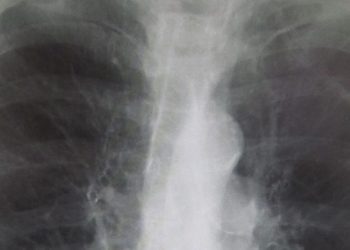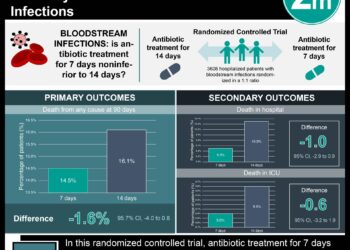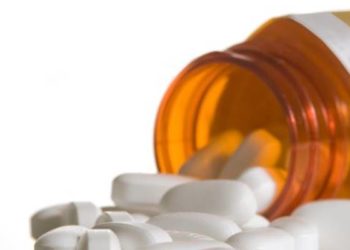Low risk allergy symptoms not linked to true penicillin allergy
1. 100% of children with low-risk symptoms such as rash and itching were negative for true penicillin allergies after 3-tier testing.
2. Rash and itching were reported to be the most common reactions misclassified as penicillin allergies by parents.
Evidence rating level: 4 (Below Average)
Study Rundown: Although penicillin is the most commonly reported medication allergy among the pediatric population, the majority of reported symptoms (rash, vomiting, diarrhea, etc.) are low-risk for true allergy. Having a penicillin allergy diagnosis alters physician antibiotic choice and may lead to suboptimal antibacterial therapy among children who present to the pediatric emergency department. In this study, researchers used a 3-tier testing processes to test for true allergy among 100 children with parent-reported, low-risk penicillin allergies. Results showed that the most commonly reported allergy symptom was rash, followed by itching. The majority of patients described initially having symptoms in relation to antibiotics used to treat an ear infection. Despite the diagnosis, all children tested were negative for true penicillin allergy. This study is limited in that symptoms were reported by parents, therefore the severity may have been misclassified. Also, selection bias may exist as not all eligible patients agreed to be tested. This study suggests using questionnaires to identify patients at low-risk for true penicillin allergies may reduce the need for time consuming and costly skin testing, and may aid in improving use of first-line antibiotic therapy for children in the pediatric ED setting.
Click to read the study, published today in Pediatrics
Relevant reading: The facts about penicillin allergy: a review
In-depth [case series]: In this study, researchers identified children of ages of 3.5 to 18 years with a reported penicillin allergy who presented to an urban pediatric emergency department between April 2015 and November 2016. Parents were asked to fill out an allergy questionnaire that included questions on demographic information, allergy symptoms, and indication for antibiotics. From the 597 questionnaires completed, 434 (72.6%) were identified as having a low-risk allergy, and 302 were eligible for penicillin testing after chart review and symptom verification with the child’s primary care physician. Ultimately, 100 patients underwent the 3-tier allergy testing, which included a penicillin percutaneous test, an intracutaneous test, and finally an oral penicillin challenge. Only patients with no high-risk symptoms (e.g. any respiratory or cardiac symptoms) at 15 minutes were allowed to continue to the next tier. The median age of those tested was 9 years, while the median age of allergy diagnosis was 1 year. 60% were white, 20% were African American, and 11% were Hispanic. Rash was the most commonly reported symptom (97%), followed by itching (63%). Results showed that 100% of children with low-risk allergy symptoms tested in this analysis were negative for true penicillin allergies (95% CI 96.4%-100%). 75% of patients reported first noticing the allergy symptoms after being treated for ear infections, and 17% for throat infections. 92% of parents said the allergy was diagnosed by their child’s PCP, while conversations with 100% of the PCPs revealed that only 14% of cases had symptoms witnessed by a medical professional.
Image: PD
©2017 2 Minute Medicine, Inc. All rights reserved. No works may be reproduced without expressed written consent from 2 Minute Medicine, Inc. Inquire about licensing here. No article should be construed as medical advice and is not intended as such by the authors or by 2 Minute Medicine, Inc.







